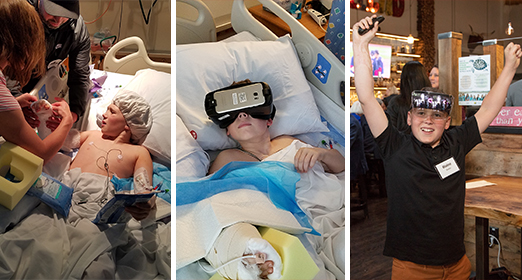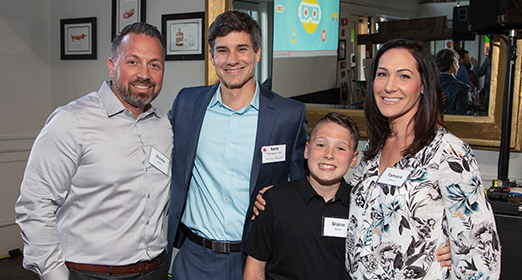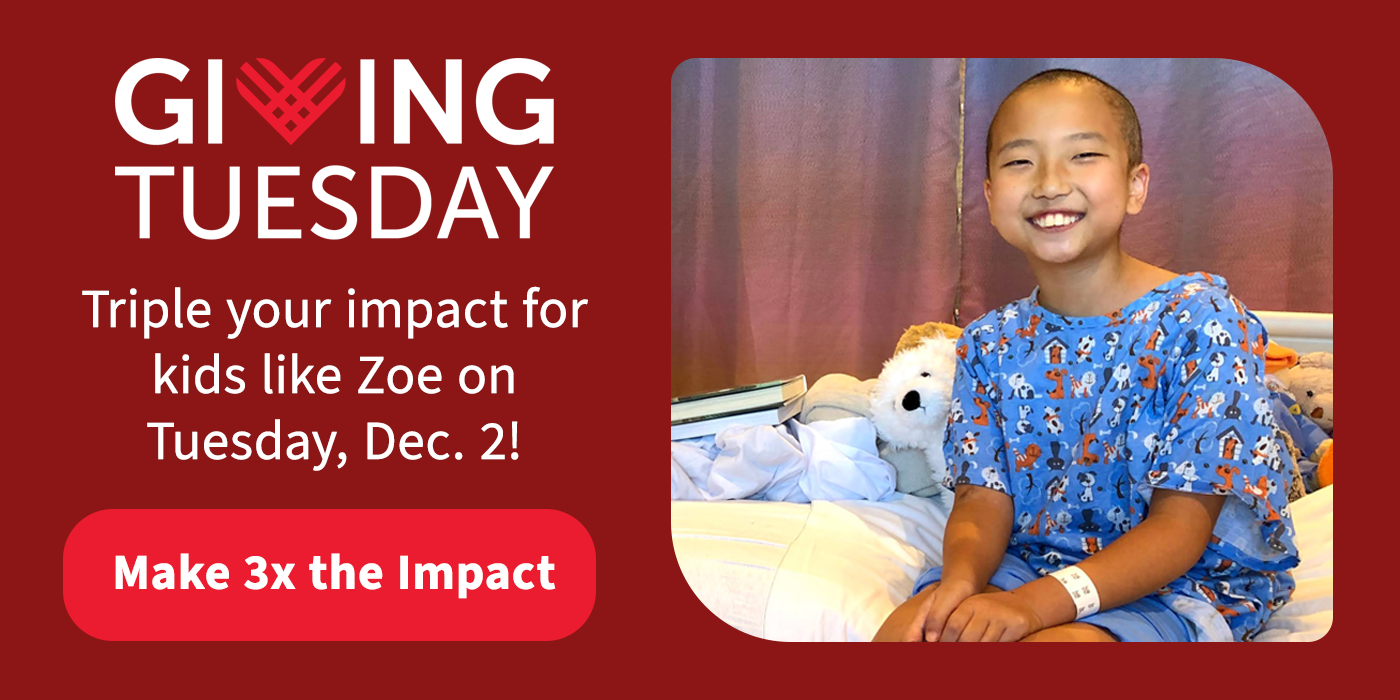Nine-year-old Blaine Baxter was so nervous, he was pale and sweating.
The dreaded routine was starting yet again—nurses, doctors, anesthesiologists, and fellows would gather around his hospital bed to begin the dressing changes. Blaine’s pain and anxiety associated with the changes were almost unbearable.
Blaine had endured this procedure up to four times a day since undergoing surgery after a go-kart racing accident nearly severed his arm. To his parents, Dustin and Tamara, it felt like torture watching Blaine in distress.
“He had so much anxiety over the procedures that he would fight to push the team away,” remembers Dustin. “Blaine had adverse effects to many of the anti-anxiety drugs or had been on such high doses of other drugs for extended periods that Tamara and I were concerned about the long-term effects. We couldn’t stand to see our son so sedated multiple times per day to have these dressing changes completed.”
Then pain management specialist Elliot Krane, MD, suggested something that would change everything.
“He pulled me aside and asked, ‘Can we try virtual reality as a diversion tactic to help Blaine with his anxiety?’” Dustin recalls. The doctor wanted to immerse Blaine in a virtual world free of pokes, prods, and rooms full of strangers. It worked and became a mainstay in Blaine’s dressing changes.
“With the headset and virtual reality games, Blaine would allow his mind to drift off, and we could handle his arm and do what was needed,” Dustin says. “And Blaine quickly realized what it was doing for him. He would ask for the goggles whenever anyone asked to handle his arm. We saw an immediate result that allowed us to lower the dosage of medication needed to reduce his pain and anxiety.”
Chariot to the Rescue
Pediatric anesthesiologists Sam Rodriguez, MD, and Thomas Caruso, MD, MEd, co-founded the Stanford Chariot Program in 2015 for cases like Blaine’s.
“One of the challenges we encountered was that some children would come in very anxious,” explains Rodriguez. “They were scared and in pain, and we wanted to find ways to treat anxiety that either complemented some of the medications we use, or potentially even replaced them.”
Initially focused on surgical cases, today the Chariot Program is available to patients in nearly every inpatient unit at Lucile Packard Children’s Hospital Stanford, as well as numerous outpatient units and clinics. Child life specialists are trained in the program’s technology and help guide patients through fully immersive virtual reality (VR) games like Space Pups or interactions with augmented reality characters named Jenny and Ben, who appear in a patient’s field of vision when the patient is wearing special glasses.
One upcoming iteration of the Chariot Program is the Pain Rehabilitation Program and an experience called Fruity Feet. It will be one of the first VR programs designed specifically for pediatric physical therapy patients.
“The patients wear sensors on their feet, and in the game, they’re on a farm,” explains Rodriguez. “The physical therapist can set parameters around the rehab session based on how high they want the kid to lift their legs, how far they want them to step, whether they want to do it seated or walking around, whether it’s just ankle movement. Within the game, the kids are essentially kicking fruit or stepping on fruit, or if they’re working on an upper extremity, they can swat stuff or pretend to eat fruit and vegetables falling from the sky.”
Chariot isn’t just for children, either. The team outfits parents with headsets to participate in guided meditations while they wait for their child to come through a difficult procedure. The programs are available in English and Spanish.
“We saw one mom’s anxiety level drop from a 10 to a 4 when she put on a headset and participated in breathing exercises,” says Ahtziri Fonseca, the program’s clinical research coordinator. In our Johnson Center for Pregnancy and Newborn Services, mothers in labor can request headsets to help distract themselves during an epidural procedure—turning a fraught moment into an opportunity to explore virtual underwater worlds.
Your Role in Chariot’s Success
The Chariot Program is funded entirely by philanthropy. It simply wouldn’t exist without donors like you. With generous support from our community, as well as organizations like Starlight Children’s Foundation, along with its partners Google, Disney, and Lucasfilm; the Auxiliaries Endowment; The Traverse Foundation; The Mayday Fund; Jazz Pharmaceuticals; Bank of America; and many others, Chariot has grown to become a leader in virtual reality solutions for children’s hospitals. Researchers from around the world visit our hospital to learn about our program.
Today the Chariot team is small but mighty—only one permanent staff member works on the program half-time—but each summer a group of fellows and interns gathers to expand the program. The hope is that with more philanthropic support, Chariot can continue to grow and develop new ways to help children and families.
“Donors have been with us every step of the way,” Rodriguez says. “They have helped us take the Chariot Program from a vision to something that helps thousands of kids every year, at our hospital and around the world. They’ve made a huge difference.”
Crossing the Finish Line
A month later, as Dustin and Tamara Baxter prepared their family to return home to Santa Rosa and take over Blaine’s ongoing care, they made one important purchase: a VR headset that would enable their cellphones to replicate the device Blaine had used at Packard Children’s.
It worked. Blaine continued his incredible recovery and, in a display of immense courage, returned to the racetrack, putting his accident behind him. He won his second race back.
“The last year has been one of the toughest times of our lives,” says Dustin. “We are grateful for the outcome and the team that worked by our side for that month. We feel very fortunate to have had access to VR. We can’t thank everyone at Stanford—and the donors who support this technology—enough for all they have done.”
You Can Help
The Stanford Chariot Program exists only because of donors like you. You can help expand the program and bring the latest technology to more patients.
Make a gift now at supportLPCH.org/Chariot.
Fund a full-time research fellow to study the impact that technology has on reducing pain and stress in children. To learn more about this and other funding opportunities, contact Stacy Neiman at (650) 723-7738 or Stacy.Neiman@lpfch.org.
This article originally appeared in the Fall 2018 issue of Packard Children’s News.
Photography credit: Douglas Peck, Baxter Family




